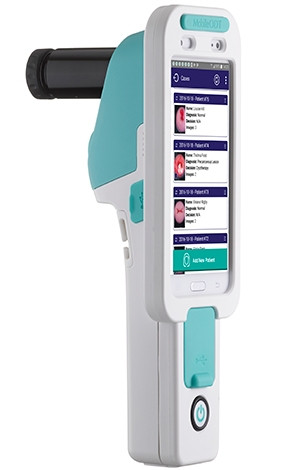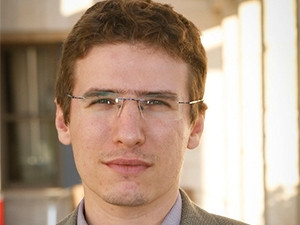
Innovative mobile technology is helping save African women's lives through early detection for cervical cancer.
The Israeli company, MobileODT (Mobile Optical Detection Technologies), has developed a device, app and Web-based system to support cervical cancer screening and treatment services, using cloud computing to allow practitioners to share vital data through linked networks.
"MobileODT began as a crazy idea: could we use the electronics in mobile phones to match the power and performance of advanced medical devices? And if we could, why would that matter? What problem could we solve with such a powerful set of tools?" Ariel Beery, CEO and co-founder of MobileODT, told ITWeb via e-mail.
MobileODT combines the algorithmic power of biomedical optics with the computational capabilities and connectivity of mobile phones. Its first product, the EVA (Enhanced Visual Assessment) System, is an Internet-connected mobile colposcope used for cervix examinations.
Rural challenges
While expert medical care is often available in urban areas, it is hard to come by in rural areas, especially in Africa. Beery says billions of people worldwide, and millions across Africa, do not receive the early interventions that could save them from more extensive future procedures, or ultimately save their lives.
The World Health Organisation estimates 85% of women worldwide do not have adequate access to cervical cancer screening, leading to 275 000 attributable deaths annually. Beery says this is "a tragedy because cervical cancer takes 20 years to develop, and can be treated for less than $28 [R376] and in less than 40 minutes if caught in the first five years".
"Cervical cancer remains one of the largest, unaddressed global health challenges across Sub-Saharan Africa. While cervical cancer is easily detectable and treatable in its early stages in a single patient visit without the need for expensive and ongoing treatment, only 6% of women are screened.
"Compounded with a limited state of healthcare infrastructure and human resources, detection of cervical cancer occurs most frequently during the advanced stages of the cancer," he says.
Beery adds that women living with HIV are five times more likely to develop cervical cancer than their HIV-negative peers.
"In essence, we are treating women for HIV successfully, but losing them to cervical cancer. Because of these factors, mortality remains shockingly high, despite significant donor investment in HIV prevention and treatment, maternal health and reproductive healthcare."
He says the EVA System can be transported to rural and remote locations of Africa and its low cost allows providers in smaller community clinics to have access to a high-quality tool for cervical cancer screening.
The EVA System is already being used in Ghana, Cote d'Ivoire, the Gambia, Kenya, Ethiopia, Nigeria, Burkina Faso, Swaziland and Mozambique. There are also some EVA Systems in use in SA as part of a study. The system is being used at the Africa Cancer Institute at Stellenbosch University and by doctors at Wits University in Johannesburg through clinical trials which began in July.
Supporting the EVA mobile colposcope is Amazon Web Services (AWS) cloud, which allows for analytics capabilities and cloud-based algorithms that enable nurses and general practitioners to conduct colposcopies and sexual assault examinations, with remote support and supervision. The real-time sharing of data through the AWS cloud allows for a more accurate screening process and faster reaction time for treatment.
"Today we are literally using the AWS cloud to save lives," he says. "The shared data through AWS cloud is forming part of a larger knowledge base, allowing for the eventual improvement of diagnostic systems and early detection of cervical cancer."
Beery says in future models, the EVA System will incorporate algorithms to predict cervix type and improve patient outcomes.
Then and now
"We started with two people working together to build a prototype and find resources that would help us build a company whose mission was and remains to save as many lives as possible, as quickly as possible. We had a cause, and sought out the technology to drive that cause forward," Beery explains.

He says today the company is doing more than it initially imagined and the technology is being used to save lives on five continents, and the company is "only getting started". He says the team is now working on developing algorithms to enable machine-led decision support.
"Our first algorithm is able to aid in determining cervix type which can indicate which treatment a woman should be referred to."
According to Beery, the next product lines include an attachment for ears, nose and throat, oral cancer screening and then dermatology.
"In parallel, we are also building out our online portal to capture more data points and provide a cancer registry."
On the business side, the company is doing well and Beery says it invoices about $100 000 (R1.3 million) in sales every month and anticipates this number to rise each month going forward. In July, it raised an additional $6.8 million (R92 million) in a fundraising round led by the OrbiMed Advisors healthcare venture fund. MobileODT has raised over $13 million (R175 million) to date.
Share